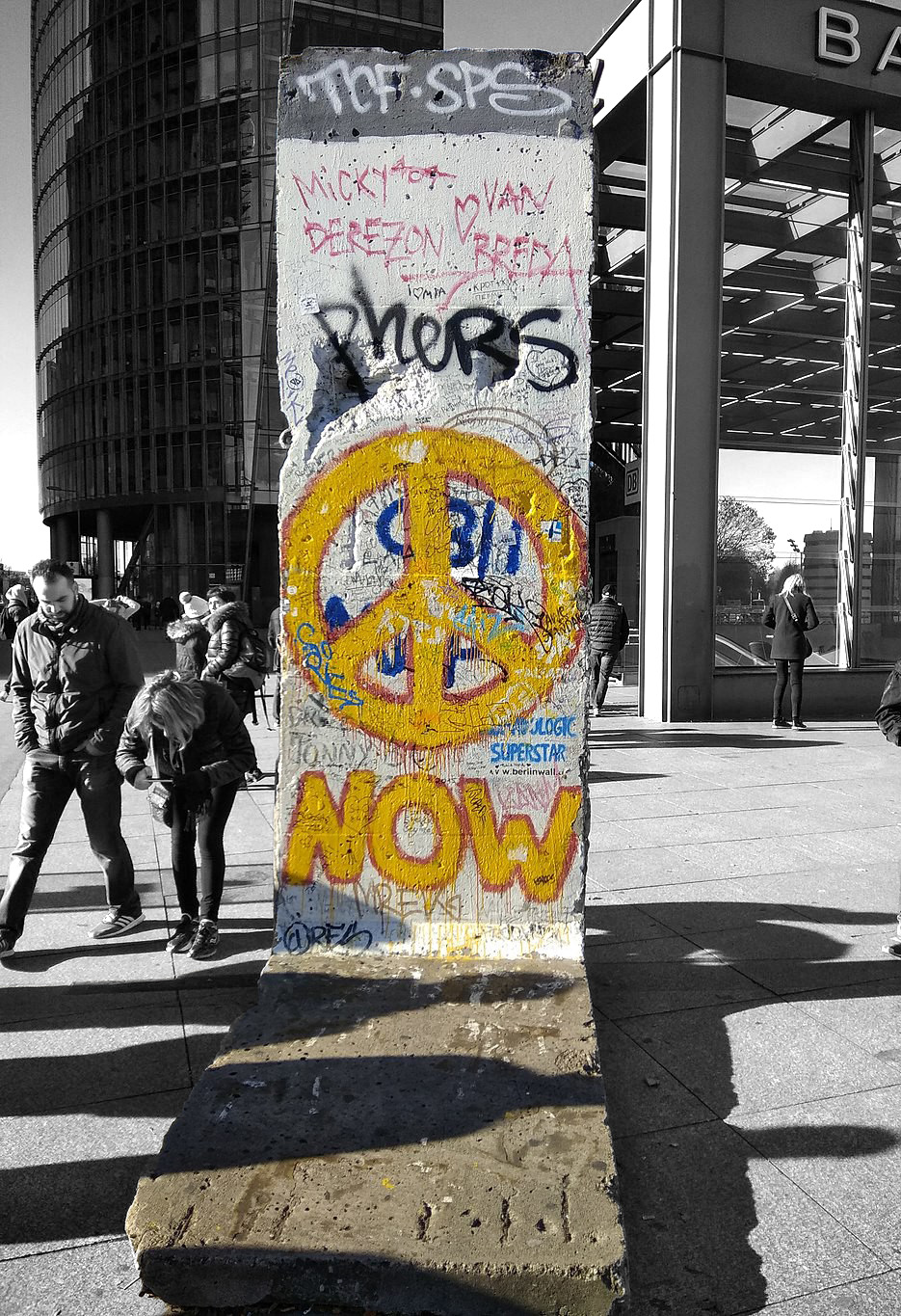Kenan Senior Fellow Reflects on the 30th Anniversary of the Fall of the Berlin Wall

November 9th marked the 30th anniversary of the fall of the Berlin Wall, which Kenan Senior Fellow Dirk Philipsen commemorated in a four-part refection published on Medium and in national newspapers. Philipsen, a West Berliner growing up in the shadow of the Wall, shares his perspective saying, “Walls don’t solve underlying problems, and rarely last. But they do truncate what we see.”
Last week, Philipsen was also invited to speak at the Center for European Studies, University of Florida in Gainesville on this topic. His talk included several key arguments – one of which had to do with our collective sense of possibility, or, rather, our collective sense of presumed impossibility.
“It is hard for the world’s elites to admit: We’re collectively terrible at predicting what’s possible. Indeed, the historical record suggests a clear trend: Most major transformations take place right after the experts tell us they can’t, and won’t, ever happen. Women’s, labor, and civil rights; speed of computer processors; nuclear weapons; the flight to the moon; the building of the Berlin wall.
We may call it the “aura of inevitability” – this terrible idea that somehow our current sense of reality is a good guide to what will, or can, happen tomorrow. If history followed our collective sense of what is realistic or possible, we’d still be riding around in horse-drawn carriages.”
(Mis)Reading the Berlin Wall — 30 years later
By Dirk Philipsen
November 9 marks the 30th anniversary of the fall of the Berlin Wall. Most people over 50 remember where they were that day. Yet its meaning is still shrouded in historical fog.
For me as a 25-year-old Berliner in 1984, living a stone’s throw away, the Wall seemed immovable, and eternal. Despite the wall-enclosed death strip slicing through the heart of my beloved city, life seemed normal. I had close friends, freely discussed politics in street cafés in Kreuzberg, played Frisbee in the city’s verdant Tiergarten park, and learned from an astonishing range of scholars at the Free University. Erected in 1961, the Wall appeared simply a symbol of the Cold War, the dividing line between the worlds of American market capitalism and Soviet one-party communism.
In hindsight, scholars understand the construction of the wall as virtually inevitable. Political maneuvers on the part of the occupying superpowers had left two unequal parts — a booming West Germany, a struggling East Germany. As a result, some 4 million East Germans fled to the West between 1949 and 1961. By the time soldiers of the East German People’s Army rolled out the Wall’s first foundations — barbed wire and cement blocks in streets and intersections — East Germany had hemorrhaged its most vital talent. As a nation, its options boiled down to collapse or Wall.
The Wall could be seen as only one hand of a dramatic series of high-stakes poker games between the U.S. and the USSR. Had the Soviets opted for occupation rather than the Wall, only nuclear weapons could’ve deterred a Soviet takeover of the entire city. Famously, President Kennedy responded to the Wall’s construction in August 1961 by quipping, “A wall is a hell of a lot better than a war.”
Read the rest on medium.com including links to parts 2, 3, and 4.
Dirk Philpsen is a Senior Fellow at the Kenan Institute for Ethics, Associate Research Professor of Economic History, Co-Director of the Sustainability Engagement Certificate, and Member of the Alliance for Sustainability and Prosperity.
